|
Introduction to Weihai
Weihai (Chinese: 威海; pinyin: Wēihǎi), historically known as Weihai Garrison (Chinese: 威海衛; pinyin: Wēihǎi Wèi) or Weihaiwei, and occasionally referred to as Port Edward during the colonial era, is a prefecture-level city located at the eastern end of the Shandong Peninsula. It is bordered by the Yellow Sea on the north, east, and south, facing the Liaodong Peninsula to the north and the Korean Peninsula across the sea to the east, while it shares its western border with Yantai City. The maximum horizontal distance from east to west is 135 kilometers, and the maximum vertical distance from north to south is 81 kilometers, with a total area of 5,799.84 square kilometers. The urban area covers 2,607.28 square kilometers (including Wendeng District). The coastline extends for 978 kilometers.
Location
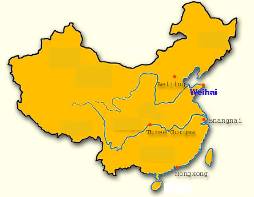
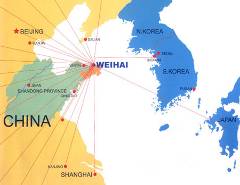
Administrative Divisions and Population
The prefecture-level city of Weihai encompasses four county-level divisions, comprising two districts and two county-level cities. These are Huancui District (环翠区), Wendeng District (文登区), Rongcheng City (荣成市), and Rushan City (乳山市). These are further subdivided into 66 township-level divisions, comprising 52 towns and 14 subdistricts. At the end of 2022, it's permanent resident population was 2.9178 million.
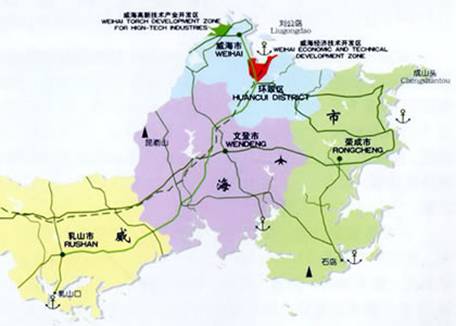
These are further divided into 66
township-level divisions, including 52 towns and 14 subdistricts.
History
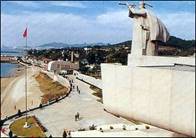 The port served as the base for China's Beiyang Fleet during the Qing Dynasty. In 1895, it fell to the Japanese from the landward side and was subsequently evacuated in 1898. The port served as the base for China's Beiyang Fleet during the Qing Dynasty. In 1895, it fell to the Japanese from the landward side and was subsequently evacuated in 1898.
Following Russia's lease of Port Arthur from China in March 1898, the United Kingdom secured a lease contingent on the Russian presence there. When Japan assumed control of Port Arthur in 1905, the British lease extended as long as the Japanese occupied the territory. Consequently, the city became part of "Weihaiwei," an area of approximately 285 square miles (740 km2), leased by the United Kingdom from 1898 until October 1, 1930.
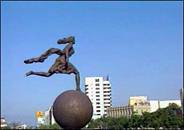
Reginald Johnston served as the last British commissioner of Weihaiwei. After its return to the Republic of China, the successor to the Qing Dynasty, it briefly operated as a special administrative region. In 1949, Weihaiwei City was renamed Weihai City upon the establishment of the People's Republic of China.
British sailors dubbed the port "Way High," while it was also known as Port Edward in English.
Geography and Climate
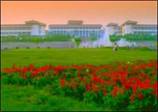 Surrounded by sea on three sides, Weihai benefits from the protective barrier of Liugong Island. Situated on the northeastern coast of Shandong Province, China, Weihai's coordinates are approximately 37°28′0″N latitude and 122°7′0″E longitude. Surrounded by sea on three sides, Weihai benefits from the protective barrier of Liugong Island. Situated on the northeastern coast of Shandong Province, China, Weihai's coordinates are approximately 37°28′0″N latitude and 122°7′0″E longitude.
Weihai has a mild, seasonal climate
moderated by the surrounding sea. August is the warmest month with a
24-hour average temperature of 24.3°C and January the coldest
(24-hour average temperature of -1.5°C.
For today’s weather report in Weihai, please visit: link
http://www.tianqi123.com/china,weather,forecast/chengshi_1658.html
Economy
Currently, Weihai serves as a commercial port and significant fishing hub, complemented by various light industries. It is notably renowned for peanut and fruit production. The output of aquatic products has reached 2.21 million tons, marking a 5.2% increase, with an additional value of 23.37 billion, up by 18.5%. The domestic consumer market has shown robust growth, with the total retail volume of social consumer products reaching 13.259 billion, up by 13.4%. Additionally, the finance and foreign trade sectors have seen continuous development, contributing to significant economic achievements.
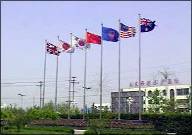
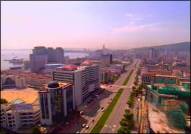
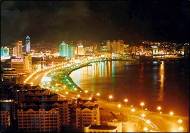
Education
Weihai boasts four broadcasting stations covering 86.6% of the area and four TV stations with a coverage of 96.2%. Additionally, it hosts six professional art troupes, six newspaper offices, libraries, museums, painting and calligraphy studios, literature creation centers, archives, cinemas, and dancing halls. With comprehensive cultural facilities and a well-regulated cultural market, the city's social and cultural activities are vibrant, artistic endeavors are flourishing, and achievements in international cultural exchanges are notable.
Furthermore, Weihai is home to campuses of Shandong University and Harbin Institute of Technology.
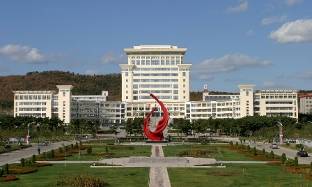
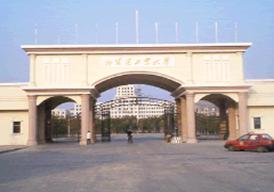
Transportation
Weihai International Airport provides regular service to major domestic destinations such as Beijing, Shanghai, Guangzhou, and Harbin, as well as the Korean cities of Seoul and Busan. The N456 train departs daily at 8:30 PM for Jinan, the provincial capital, while the No. 2518 train offers direct service to Beijing. Within the city, there are 44 bus routes serving various destinations.
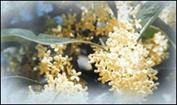 City
Flower of Weihai City
Flower of Weihai
Laurel bushes are characterized by their lush, evergreen foliage and fragrant blossoms that emerge in mid-autumn. Their versatility makes them ideal for adorning institutions, schools, and residences, as they are resilient to noxious gases and thrive in warm, sunny environments. Additionally, laurels can adapt to various soil types, further enhancing their appeal as a city flower for Weihai.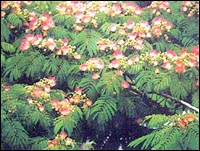
City Tree of Weihai
The Silk Tree is a deciduous tree known for its umbrella-shaped crown and delicate, thin leaves. Adorned with clusters of vibrant red flowers, silk trees add a unique charm to their surroundings. Particularly suitable for industrial areas, silk trees provide greenery amidst factories and mines. They exhibit remarkable adaptability, thriving in barren, arid, and even cold regions. Furthermore, silk trees play a vital role in soil stabilization, making them an excellent choice for protective embankments. In May 1993, the silk tree was officially designated as the city tree of Weihai.
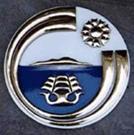
Symbol of Weihai
The symbol of Weihai is formed by the initials C.W.H., representing the English capital letters of China Wei Hai. The letter C features a graceful curve with blue ripples, symbolizing the picturesque coastal landscape. Liugong Island stands prominently in the center of the bay, signifying Weihai's status as a beautiful coastal tourist destination. The letter W transforms into an ancient sailing boat, reflecting Weihai's historical significance as a coastal defense stronghold. Lastly, the letter H takes on the shape of petals from the city flower, creating radiant rings around the sun, symbolizing Weihai's identity as a flourishing garden city, with its prosperity likened to the dawn of a new day.
Sister cities
• Cheltenham, United Kingdom (since May 21, 1987)
• Ube, Yamaguchi, Japan (May 18, 1992)
• Santa Barbara, United States (December 8, 1994)
• Yeosu,South Korea,(February 17, 1994)
• Sochi, Russia (October 18, 1996)
• Biella, Italy (October 22, 1996)
• Timaru, New Zealand (July 30, 1998)
• Brazzaville, Republic of the Congo (May 24, 2004)

External links
• Government website of Weihai
www.weihai.gov.cn
(available in Chinese, English, Japanese and Korean)
• Weihai Sub-Council of China Council for the Promotion of
International Trade
http://en.whccpit.org.cn/ |



 The port served as the base for China's Beiyang Fleet during the Qing Dynasty. In 1895, it fell to the Japanese from the landward side and was subsequently evacuated in 1898.
The port served as the base for China's Beiyang Fleet during the Qing Dynasty. In 1895, it fell to the Japanese from the landward side and was subsequently evacuated in 1898.
 Surrounded by sea on three sides, Weihai benefits from the protective barrier of Liugong Island. Situated on the northeastern coast of Shandong Province, China, Weihai's coordinates are approximately 37°28′0″N latitude and 122°7′0″E longitude.
Surrounded by sea on three sides, Weihai benefits from the protective barrier of Liugong Island. Situated on the northeastern coast of Shandong Province, China, Weihai's coordinates are approximately 37°28′0″N latitude and 122°7′0″E longitude.




 City
Flower of Weihai
City
Flower of Weihai

